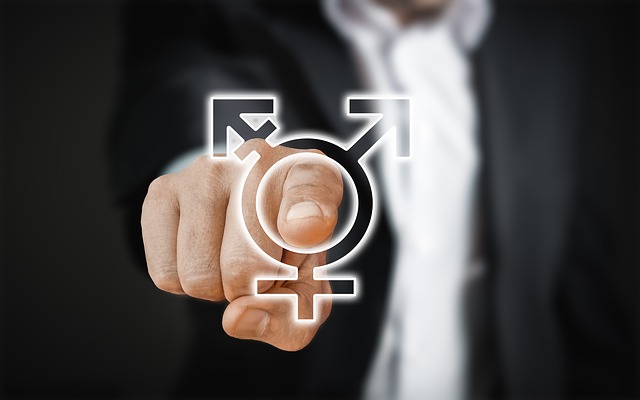Changing the Bigger Picture for Long-Term Gender Equality

In the fight to achieve long-term gender equality, many small battles have been won and lost. Although discrimination in the workplace has been a discussion for decades, women and social rights activists have become more adamant than ever over the last few years about creating safe work spaces for women. Women file the majority of discrimination reports, but in order to truly change the bigger picture for gender equality, we must rewrite public policy, and campaign to raise awareness that discrimination remains a prevalent problem in the U.S.
As with any civil rights movement, seeking equality is a long process. Women have been harassed, victimized and discriminated against for decades, and have experienced all of these forms of abuse in the workplace as well. However, fighting small-scale gender discrimination paves the way for achieving the long-term change that will reduce and hopefully eliminate workplace gender discrimination in the future.
Small-Scale Gender Discrimination
For a long time, women experienced discrimination in the workplace without consequence to the employer or fellow coworker. However, now that there are several legal protections against gender discrimination in the workplace, employers are unable to openly discriminate against women in the workplace without risking a lawsuit.
Although the law is now made to prevent gender discrimination from occurring, employers have adapted their practices, and learned how to create loopholes to avoid being considered openly discriminatory. This is done by making specific traits that appeal to one gender part of the job description, such as creating weight carrying limits.
While equal employment opportunity laws make it clear that it is against the law to discriminate against employees based on gender, this is not always enough to avoid conflict in the workplace. Whether it’s coming from the employer or fellow coworkers, casual gender discrimination and workplace bullying are not uncommon in the workplace.
This is often the result of personality differences between coworkers, but some coworkers simply don’t want to get along. Although it’s normal for people to have conflicting personalities and to not particularly like their coworkers, workplace bullying is never appropriate. When intentional malicious actions occur in the workplace, they should be reported and addressed by HR, as this type of behavior leads to hostile work environments.
Conflict resolution can be challenging, but when gender becomes a factor in the conflict, employers must step in to ensure discrimination isn’t occurring in the workplace, or risk legal action against them. Although reporting discrimination can be scary when you feel that your job is on the line, talking to the HR department can help women feel more comfortable about taking this step. If HR isn’t helpful, consult a lawyer for help.

Achieving Long-Term Gender Equality
Gender discrimination laws that provide protections for women have been a step in the right direction. Although it’s unfortunate that women still need to regularly stand up for themselves when it comes to casual workplace discrimination, this can be remedied by working to achieve change on a community-minded scale. Raising awareness about casual workplace discrimination helps teach those who are guilty of this behavior that they are part of the problem.
Changing Public Policy
As women work to show people what a standard of mutual respect looks like, the hope is to help people reach an understanding of why certain types of comments are inappropriate and offensive to those of a certain gender. This seems like a very basic concept, but to achieve long-term equality, it’s important to encourage understanding that will change previously unwavering mindsets.
One way women continue to fight the workplace divide and attempt to achieve long-term gender equality is by demanding what they’re owed and being unapologetic about it. The pay gap is still as prevalent as ever, and to combat this form of integrated workplace discrimination, you should ask for 20% more than they expect in pursuit of achieving a fair wage. This can help women get closer to earning the wage they deserve.
If you have the time and energy, it’s can also be beneficial to write to your legislators and ask them to direct their attention to sex discrimination policies. Address the facts of the problem and request they propose policy rewrites to include sections that will enforce equal pay and call for more serious investigations to address reports of workplace discrimination. You could also consider creating or becoming involved with legislative teams that will write proposals for policies that will make putting these changes through the legislature a little easier.

Joining Anti-Discrimination Campaigns
Another way that women can help contribute to long-term gender equality is to suggest policies that will improve organizational diversity in the workplace. This may include policies that address all forms of diversity by establishing inclusive standards for communication, such as rules banning slurs or sexist stereotype comments. These policies could also include cultural awareness and sensitivity training to encourage understanding of all types of diversity.
While this should all be the responsibility of the company, offering to help lead efforts to improve diversity can help push a company in the right direction and encourage organization diversity to be done at a high-standard. Taking the lead on this type of work can help lay the structure for what an inclusive business should look like, which could greatly benefit the company, as well as all future employees of the business.
To further the cause of women’s right in the workplace, women should consider joining organizations that fight for equal rights, such as the National Organization for Women. This grassroots movement works to address several women’s rights issues through various strategies, including supporting political action committees that fight for women’s rights, as well as other intersectional issues.
Gender Equality Means Gender Inclusive
In order to help lift all women up, workplace policies must be inclusive to women of all cultures, sexual orientations, and backgrounds. Women who are looking at the bigger picture of long-term gender equality must focus on the inclusion of all women, because oppression in the workplace is intersectional; and while we may be close to achieving gender equality for white women, women of color remain at a further disadvantage.
While we must continue to fight every small battle as we work towards gender equality in the workplace, the bigger picture demands structural change at all levels. Until we fundamentally change the expectations for diversity in the workplace, women will be fighting a series of small battles to achieve long-term structural change.
This guest post was authored by Brooke Faulkner

Brooke Faulkner is a writer, mom and adventurer in the Pacific Northwest. She spends her days pondering what makes a good leader. And then dreaming up ways to teach these virtues to her sons, without getting groans and eye rolls in response.




